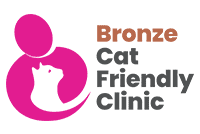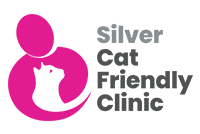Neosporosis is caused by a protozoan parasite called Neospora caninum. It accounts for 12.5% of UK abortions in cattle but also causes losses through reduced milk yields and increased culling rates.
Clinical Signs
- Abortion from 3-9 months (especially 5-7 months)
- Still born / premature calves
- Calves may have brain disease, be weak or have an abnormal gait
- Repeat abortions with cows not showing any further clinical signs
Transmission
There are two routes of transmission, vertical (from dam to calf) and horizontal (from dog to cow).
Horizontal: Dogs and other canids (such as foxes) are definitive hosts. The protozoa are contained within aborted/birthing materials of infected cattle and dogs can become infected by consuming this material. Dogs produce eggs contaminating pasture, food or water, which the cattle then ingest. These parasites can then form dormant tissue cysts within the cow.
Vertical: When the animal becomes pregnant the parasite is activated and it crosses the placenta to the foetus where it can have 3 outcomes:
- Normal calf (10%)
- Persistently Infected calf (80%)
- Aborted calf (10%)
95% of calves born to affected mothers are themselves infected. These infected heifers are most likely to abort in their first pregnancy. Cattle do not produce oocysts so adult cows do not transmit the protozoa between each other.
Diagnosis
Ideally Nesopora should be diagnosed from an aborted animal by submission of the aborted foetus, placenta and a blood sample from the dam. The calf typically shows brain and heart damage and on examination of tissues Neospora caninum can be found by PCR. However, Neospora can be identified in many aborted foetuses therefore it is important to rule out other infectious causes of abortion to aid diagnosis.
Diagnosis of Neospora in the dam can be made by taking a blood sample and identifying antibodies. However, antibody levels in the dam do fluctuate throughout pregnancy therefore a negative result doesn't always confirm an animal is free from infection. Antibody levels are at their highest in the 2 months around pregnancy. Antibodies can also be detected in the milk.
Antibody levels in animals between 12-18 months of age are low thus testing animals at these ages should be avoided.
The pattern of abortions may help with diagnosis. A sudden storm of abortions would most likely be associated with infection arising by transmission from dog to cow. A more chronic abortion problem would be most likely associated with transmission from dam to offspring and chronically infected animals within the herd.
There is no treatment for Neosporosis
Prevention
- To prevent dogs from contaminating cattle feed and water keep food and water stores secure
- To prevent dogs becoming infected around calving time ensure correct disposal of the placental membranes and aborted material
To prevent transmission from dam to calf:
- Identify all seropositive cows, these are a potential source of infection, and remove from the herd. This may not be feasible if a large proportion of the herd are affected in which case alternative preventative methods should be used
- Only keep replacements from seronegative cows, to increase the chances of getting replacements from seronegative cows sexed semen can be used
- Seropositive cows should be bred to beef
- If the infected animal has valuable genetics then embryo transfer can be used. This prevents parasite transmission trans placentally but you must make sure the recipient cow is free of Neopsora






